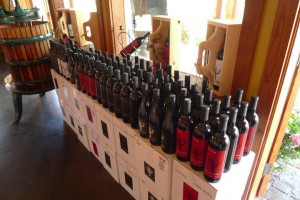A selection of recent papers covering the fundamental properties of bicontinuous & cubic mesophases including cubosomes and hexosomes.
Communications
Charged carrier mobility in the cubic (Ia3d) mesophase of 1,2-bis(4 ‘-n-nonyloxybenzoyl)hydrazine (BABH-9)
Jean-Moïse Suisse, Hiroyuki Mori, Hirosato Monobe, Shoichi Kutsumizu and Yo Shimizu, Soft Matter, 2011, 7, 11086-11088
Cubosomes for ruthenium complex delivery: formulation and characterization
Gaetano Mangiapia, Mauro Vaccaro, Gerardino D’Errico, Henrich Frielinghaus, Aurel Radulescu, Vitaliy Pipich, Anna M. Carnerup and Luigi Paduano, Soft Matter, 2011, 7, 10577-10580
Papers
Controlled embedment and release of DNA from lipidic reverse columnar hexagonal mesophases
Idit Amar-Yuli, Jozef Adamcik, Shoshana Blau, Abraham Aserin, Nissim Garti and Raffaele Mezzenga, Soft Matter, 2011, 7, 8162-8168
The interaction of cubosomes with supported phospholipid bilayers using neutron reflectometry and QCM-D
Hsin-Hui Shen, Patrick G. Hartley, Michael James, Andrew Nelson, Hugo Defendi and Keith M. McLean, Soft Matter, 2011, 7, 8041-8049
Aqueous phase behaviour of choline carboxylate surfactants-exceptional variety and extent of cubic phases
Regina Klein, Gordon J. T. Tiddy, Eva Maurer, Didier Touraud, Jordi Esquena, Olivier Tache and Werner Kunz, Soft Matter, 2011, 7, 6973-6983
Preparation and biological evaluation of self-assembled cubic phases for the polyvalent inhibition of cholera toxin
Scott J. Fraser, Rachel Rose, Meghan K. Hattarki, Patrick G. Hartley, Olan Dolezal, Raymond M. Dawson, Frances Separovic and Anastasios Polyzos, Soft Matter, 2011, 7, 6125-6134
Nanostructured self-assembly materials from neat and aqueous solutions of C18 lipid pro-drug analogues of Capecitabine-a chemotherapy agent. Focus on nanoparticulate cubosomes (TM) of the oleyl analogue
Xiaojuan Gong, Minoo J. Moghaddam, Sharon M. Sagnella, Charlotte E. Conn, Xavier Mulet, Stephen J. Danon, Lynne J. Waddington and Calum J. Drummond, Soft Matter, 2011, 7, 5764-5776
Steric stabilisation of self-assembled cubic lyotropic liquid crystalline nanoparticles: high throughput evaluation of triblock polyethylene oxide-polypropylene oxide-polyethylene oxide copolymers
Josephine Y. T. Chong, Xavier Mulet, Lynne J. Waddington, Ben J. Boyd and Calum J. Drummond, Soft Matter, 2011, 7, 4768-4777
Converging layer-by-layer polyelectrolyte microcapsule and cubic lyotropic liquid crystalline nanoparticle approaches for molecular encapsulation
Chantelle D. Driever, Xavier Mulet, Angus P. R. Johnston, Lynne J. Waddington, Helmut Thissen, Frank Caruso and Calum J. Drummond, Soft Matter, 2011, 7, 4257-4266
Templating effects of lyotropic liquid crystals in the encapsulation of amyloid fibrils and their stimuli-responsive magnetic behavior
Idit Amar-Yuli, Jozef Adamcik, Cécile Lara, Sreenath Bolisetty, Jijo J. Vallooran and Raffaele Mezzenga, Soft Matter, 2011, 7, 3348-3357
DNA-lipid self-assembly: phase behavior and phase structures of a DNA-surfactant complex mixed with lecithin and water
Azat Bilalov, Ulf Olsson and Björn Lindman, Soft Matter, 2011, 7, 730-742
Enhanced uptake of an integral membrane protein, the dopamine D2L receptor, by cubic nanostructured lipid nanoparticles doped with Ni(II) chelated EDTA amphiphiles
Charlotte E. Conn, Xavier Mulet, Minoo J. Moghaddam, Connie Darmanin, Lynne J. Waddington, Sharon M. Sagnella, Nigel Kirby, Joseph N. Varghese and Calum J. Drummond, Soft Matter, 2011, 7, 567-578
To keep up-to-date with all the latest research, sign up for the Soft Matter e-Alert or RSS feeds or follow Soft Matter on Twitter or Facebook.
Comments Off on Focus on: Bicontinuous & cubic mesophases















